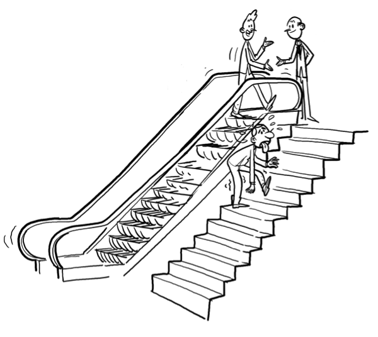 How do you design a Sales Process that will actually be adopted by your Sales team? It can be an uphill task and one of our clients took this literally and climbed a mountain to help build a better Sales Process.
How do you design a Sales Process that will actually be adopted by your Sales team? It can be an uphill task and one of our clients took this literally and climbed a mountain to help build a better Sales Process.
Why the Sales Process isn’t used
Many organisations that have a Sales Process find it is used only partially if at all by the Sales team. People fail to use the process for various reasons. It may be a process designed by senior managers and imposed on an unwilling Sales team who don’t see the benefit. It may have even been designed bottom-up but nevertheless failed to get broad buy-in. Either way, an organisation with no Sales process or a failing one will face problems regarding opportunity qualification, forecast reliability and win rate.
Why you need a good Sales process
A good Sales Process that helps Sales People to guide opportunities through each stage will deliver tangible results. The actual process and the stages will vary from one organisation to another, but in every case the process will increase the probability of winning. Also, it allows Sales Managers to see what is going on and intervene with support when and where it is most needed.
So when you are trying to improve your current Sales Process or design a new one what can you do to get buy-in from the Sales team? You have to take into consideration that most Sales People have their own way of selling, based on a combination of experience and the various courses they may have attended.
What has walking up mountains got to do with it?
Our client is a German-based automotive supplier who has made several attempts to implement a Sales Process only to find it is only used in part or not at all. Their Sales People refer to Sales Process training as ‘going in one ear and out of the other’ and ‘we do it to keep management happy’.
So the Sales Manager took his 7 direct reports to the Säntis mountain in Switzerland for 4 days where they walked and talked.
But this was not just hike and chat, he structured each section of the route to deliver specific results. He paired up his team and for each 3 hour section they took a specific stage of the Sales Process. For instance they discussed things like ‘What activities do you do between qualifying an opportunity and submitting an offer’ or ‘What are the attributes of a good value proposition for you’? Other subjects included ‘How do you increase customer urgency? ‘How do you support the customer in internal selling?’ and ‘How do you ensure that your team learns from wins and losses?’
Importantly, every answer had to be backed up with a real life example. At the end of day 1 the group consolidated all the ideas for stages 1 and 2 of the Sales Process and by the end of the hike they had a complete Sales Process checklist that everyone had contributed to. The regional Sales Managers repeated the ‘Walking Workshop’ with their teams. It took our client 3 months to develop their ideal Sales Process but acceptance was much higher than a top-down approach or a bottom-up design.
Could it have been better?
I am very impressed by the way this client approached his challenge, but I think there is still some scope for improvement. For instance, the conversations were limited to the experience of the people taking part. I think they would benefit from a consultant or even a customer with the right experience introducing new elements to the Sales process they might not have knowledge of. An example might be the importance of helping the customer to sell internally. But these are just ways to improve on an already excellent idea.
Does it have to be done up a Swiss mountain?
No, but it helps! Taking people away from the office certainly helps them concentrate on a particular issue and people who use walking meetings regularly are eager advocates. A 2015 article in the Harvard Business Review quotes research that says walking increases creative thinking and that people are more engaged, honest, open and productive in walking meetings. Apparently there are neurochemical reasons that make our brains work better when we walk and it’s just common sense that a bit of exercise does us all good.
Whether you walk or not – up a Swiss mountain or a hill closer to home – building a good Sales Process with the involvement of all concerned will lead to more Sales and better data for your organisation.
Ask yourself
-
Do you have a Sales Process that works?
-
Does your Sales Team feel they own the Sales Process?
-
Would you like to have more reliable data for forecasting?
Enjoyed this blogpost? Download our eBook:

